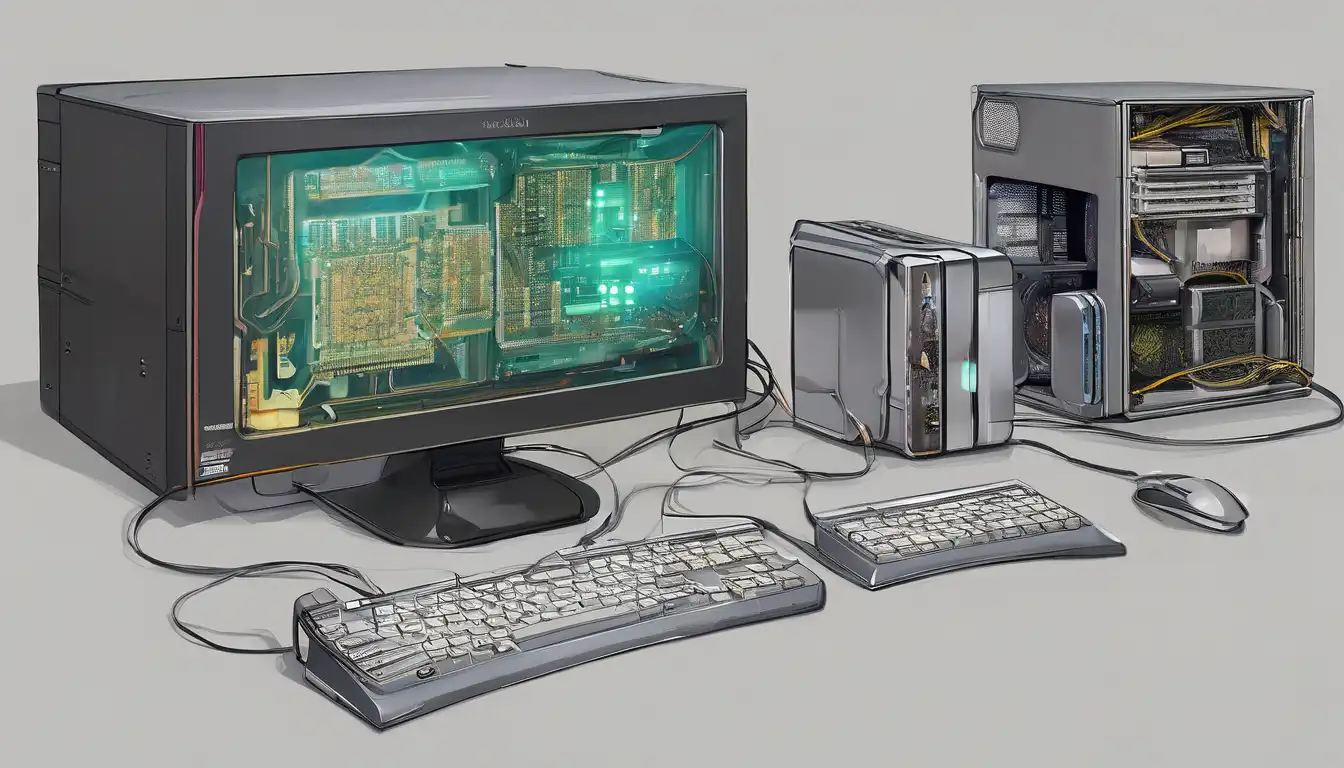Revolutionary Advances in Computer Hardware Technology
The world of computer hardware is experiencing unprecedented innovation, with breakthroughs that are reshaping how we interact with technology. From quantum computing to advanced processors, these developments are pushing the boundaries of what's possible in computing performance and efficiency. As we navigate through 2024, several key trends are emerging that promise to transform the entire technology landscape.
Next-Generation Processor Technology
Processor manufacturers are making significant strides in chip design and architecture. The latest CPUs feature advanced manufacturing processes that enable higher transistor density and improved energy efficiency. Companies like Intel, AMD, and ARM are competing fiercely to deliver processors that offer better performance per watt, with some chips now featuring over 100 cores for specialized applications.
One of the most exciting developments is the integration of artificial intelligence accelerators directly into processors. These dedicated AI cores handle machine learning tasks more efficiently than traditional CPU cores, enabling faster AI processing without requiring separate hardware. This integration is particularly beneficial for applications involving natural language processing, computer vision, and predictive analytics.
Memory and Storage Innovations
The storage sector is witnessing remarkable advancements with new technologies that offer unprecedented speed and capacity. NVMe SSDs have become the standard for high-performance storage, with latest-generation drives achieving read speeds exceeding 7,000 MB/s. These solid-state drives are revolutionizing data access times, making them essential for gaming, content creation, and enterprise applications.
Memory technology is also evolving rapidly, with DDR5 RAM becoming mainstream. Offering double the bandwidth of DDR4 while consuming less power, DDR5 memory modules are crucial for supporting the increasing demands of modern applications. Meanwhile, emerging technologies like 3D XPoint promise even faster non-volatile memory solutions that could eventually replace traditional NAND flash storage.
Graphics Processing Unit (GPU) Evolution
GPUs continue to advance at an astonishing pace, driven by demands from gaming, professional visualization, and artificial intelligence. The latest graphics cards feature ray tracing acceleration, AI-powered upscaling technologies, and support for 8K resolution gaming. These advancements are not just benefiting gamers but also professionals in fields like architecture, engineering, and scientific research.
Perhaps the most significant GPU innovation is the integration of machine learning capabilities directly into graphics processors. Technologies like NVIDIA's Tensor Cores and AMD's Matrix Cores are enabling real-time AI processing for applications ranging from autonomous vehicles to medical imaging. This convergence of graphics and AI processing is creating new possibilities for computational efficiency.
Quantum Computing Breakthroughs
While still in its early stages, quantum computing represents one of the most promising areas of hardware innovation. Recent developments have seen quantum processors with increasingly stable qubits, bringing us closer to practical quantum computing applications. Major technology companies are investing heavily in quantum research, with some systems already demonstrating quantum supremacy for specific tasks.
The potential applications for quantum computing are vast, including drug discovery, financial modeling, and cryptography. As quantum hardware becomes more accessible through cloud platforms, researchers and developers can experiment with quantum algorithms without needing specialized infrastructure. This democratization of quantum computing is accelerating innovation across multiple industries.
Cooling and Power Management Solutions
As hardware components become more powerful, effective cooling solutions have become increasingly important. Advanced cooling technologies like liquid cooling systems, phase-change materials, and innovative heat pipe designs are enabling higher sustained performance levels. These solutions are particularly crucial for data centers and high-performance computing environments where thermal management directly impacts operational efficiency.
Power efficiency has also become a primary focus for hardware manufacturers. New power delivery systems and voltage regulation technologies are helping reduce energy consumption while maintaining performance. This focus on efficiency is driving innovation in power supply units, with many now featuring digital control systems and advanced power management capabilities.
Connectivity and Interface Standards
The latest hardware innovations extend to connectivity standards, with technologies like PCIe 5.0 and USB4 offering significantly higher data transfer rates. These advancements are crucial for supporting high-speed storage devices, external graphics cards, and other peripherals. The adoption of Wi-Fi 6E and upcoming Wi-Fi 7 standards is also transforming wireless connectivity, providing faster speeds and reduced latency.
Thunderbolt 4 and USB4 are becoming standard features on modern computers, offering versatile connectivity options for displays, storage, and networking devices. These interface standards are designed to be backward compatible while providing the bandwidth needed for future applications. The convergence of these standards is simplifying connectivity while improving performance across all connected devices.
Emerging Hardware Security Features
Hardware security has become increasingly important in today's connected world. Modern processors incorporate advanced security features like hardware-based encryption, secure enclaves, and memory protection technologies. These features help protect against various cyber threats while maintaining system performance.
Trusted Platform Modules (TPM) and similar security chips are becoming standard components in modern computers, providing hardware-based security for encryption keys and authentication credentials. These security innovations are essential for protecting sensitive data in both consumer and enterprise environments, ensuring that hardware-level security keeps pace with evolving cyber threats.
The Future of Computer Hardware
Looking ahead, several emerging technologies promise to further transform computer hardware. Neuromorphic computing, which mimics the human brain's neural structure, could lead to more efficient AI processing. Photonic computing, using light instead of electricity for data transmission, offers the potential for dramatically faster processing speeds with lower power consumption.
As these technologies mature, we can expect to see continued convergence between different hardware components, with more integrated solutions that optimize performance, power efficiency, and cost. The ongoing miniaturization of components will likely lead to even more powerful computing devices in smaller form factors, enabling new applications in areas like wearable technology and Internet of Things (IoT) devices.
The rapid pace of innovation in computer hardware technology shows no signs of slowing down. Each breakthrough builds upon previous advancements, creating a virtuous cycle of improvement that benefits consumers, businesses, and society as a whole. As we continue to push the boundaries of what's possible, these hardware innovations will play a crucial role in shaping the future of computing and digital transformation across all sectors of the economy.
